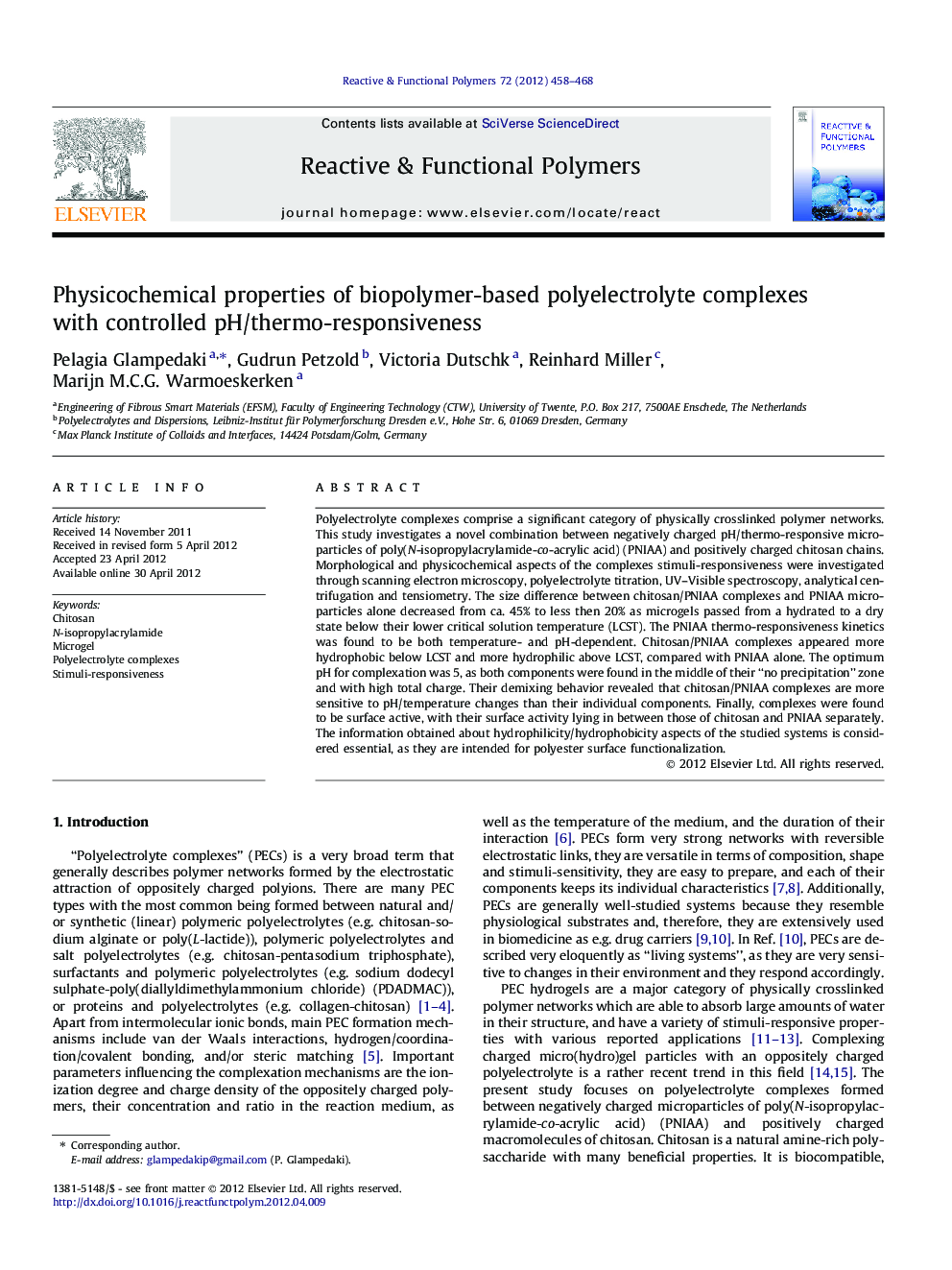| Article ID | Journal | Published Year | Pages | File Type |
|---|---|---|---|---|
| 5210338 | Reactive and Functional Polymers | 2012 | 11 Pages |
Abstract
Polyelectrolyte complexes comprise a significant category of physically crosslinked polymer networks. This study investigates a novel combination between negatively charged pH/thermo-responsive microparticles of poly(N-isopropylacrylamide-co-acrylic acid) (PNIAA) and positively charged chitosan chains. Morphological and physicochemical aspects of the complexes stimuli-responsiveness were investigated through scanning electron microscopy, polyelectrolyte titration, UV-Visible spectroscopy, analytical centrifugation and tensiometry. The size difference between chitosan/PNIAA complexes and PNIAA microparticles alone decreased from ca. 45% to less then 20% as microgels passed from a hydrated to a dry state below their lower critical solution temperature (LCST). The PNIAA thermo-responsiveness kinetics was found to be both temperature- and pH-dependent. Chitosan/PNIAA complexes appeared more hydrophobic below LCST and more hydrophilic above LCST, compared with PNIAA alone. The optimum pH for complexation was 5, as both components were found in the middle of their “no precipitation” zone and with high total charge. Their demixing behavior revealed that chitosan/PNIAA complexes are more sensitive to pH/temperature changes than their individual components. Finally, complexes were found to be surface active, with their surface activity lying in between those of chitosan and PNIAA separately. The information obtained about hydrophilicity/hydrophobicity aspects of the studied systems is considered essential, as they are intended for polyester surface functionalization.
Related Topics
Physical Sciences and Engineering
Chemistry
Organic Chemistry
Authors
Pelagia Glampedaki, Gudrun Petzold, Victoria Dutschk, Reinhard Miller, Marijn M.C.G. Warmoeskerken,
